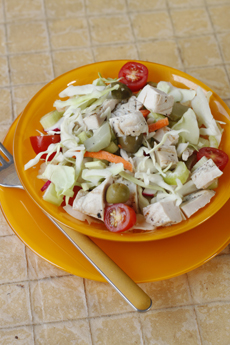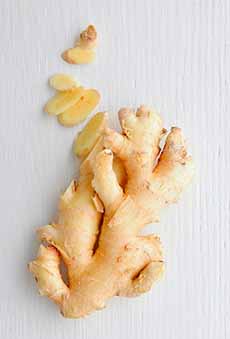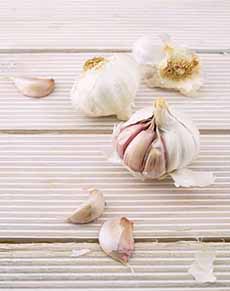TIP OF THE DAY: Homemade Ginger Miso Salad Dressing Recipe
|
The other week we went shopping at a large Japanese superstore (and the largest Japanese supermarket in the U.S.), Mitsuwa Marketplace in Edgewater, New Jersey.
Strolling up and down the aisles, we wandered into the salad dressing area. We found ourselves hungering for a big salad with ginger-miso dressing—the type of dressing, often orange in color, served on green salads at most Japanese restaurants. So… We purchased three different brands, chopped up a big salad for dinner, and tossed it with dressing. OMG: Is every prepared consumer food product sold in America drowning in sugar? Would the same brand sold in Japan be this sweet? (Indeed, manufacturers alter their recipes to suit the tastes of different nationalities. For example, the original Dutch Heineken beer is much heartier than the watered-down product sold in the U.S.) At $4.59 for a 12-ounce bottle, we were, to say the least, disappointed. We rarely purchase salad dressing because it’s so easy to make, and the price is very high given the low cost of a bit of oil, vinegar, and seasonings. If we buy a bottle, it should taste great! The recipe that follows took us 5 minutes (just toss all ingredients into the food processor); and the ingredients cost pennies, not dollars. > Check out the information below on how to choose a salad oil. > See our Culinary Oils Glossary for more information on the different types of salad oils. This recipe makes 3/4 cup dressing, enough for a salad for four. Feel free to double it and refrigerate the extra dressing—for your next salad, as a dip with raw vegetables, or as a sauce for grilled chicken, seafood, or vegetables. Ingredients 1. COMBINE all the ingredients in a food processor or blender and process until creamy. 2. USE immediately or refrigerate. |
|
|
 [4] This award-winning salad dressing is $5.49 for 10 ounces. You can make a version of it for 50 cents (photo © Canadian Grocer). |
TIP: Substitute 1 teaspoon of sesame oil for 1 teaspoon of the canola oil. If you like it, add more next time. Sesame oil has a strong flavor, so add a bit at a time. CHOOSING A SALAD OIL When choosing oil for any culinary use, head to the monounsaturated fats, the “heart-healthy” oils. Canola oil and olive oil, two popular cooking oils, are low in unhealthy saturated fat and not-so-healthy polyunsaturated fat, and high in healthy monounsaturated fat. Scientists believe that monounsaturated fats help lower the bad cholesterol (LDL) that can clog arteries, leading to heart disease or stroke, while increasing the level of good cholesterol (HDL) that removes cholesterol buildup from the arteries. Integrate more of them, as well as the other oils listed above, into your diet. |
|
|
Examples of heart-healthy oils and their percentages of monounsaturated fat: Almond oil (66%), avocado oil (74%), canola oil (62%), macadamia oil (84%), olive oil (73%—whether refined [regular], virgin or extra virgin), sunflower oil (high oleic version, 82%), tea seed oil (60%). > Here’s more on good fats vs. bad fats. While all oils are a combination of monounsaturated, polyunsaturated, and saturated fats, a heart-healthy oil has a preponderance of monounsaturated oils. In contrast, corn oil, vegetable oil *, and other popular cooking oils are largely polyunsaturated oils, where the preponderance of the fat is not monounsaturated: corn oil 62%, grape seed oil 71%; safflower oil 77%; sunflower oil (linolenic—69%). *Vegetable oil can be a blend of oils, e.g. corn, soybean, and sunflower, or it may be only one type of oil. There is no requirement for the label to list the type(s) of oil in the bottle. Generally, “vegetable oil” is refined to have a high smoke point but very little taste or aroma. This makes it a good all-purpose oil for baking, frying, and sautéeing. However, it is not of sufficient quality to be used as a condiment oil or for salad dressings. |
||


